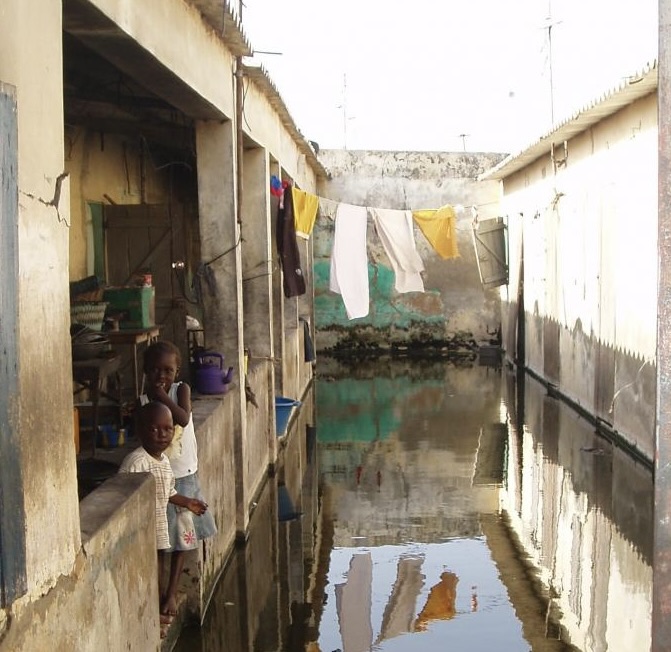Adaptation policy has grown to be of central importance in our collective response to the climate crisis – but more funding is urgently needed
This year’s UN climate change conference (COP29) in Baku, Azerbaijan, takes place amid worsening climate impacts – even countries that were not considered among the most vulnerable are waking up to the urgent need to adapt to a warming planet.
New research from the UN Environment Programme highlights the scale of the adaptation challenge and how it has grown in prominence, while finance to tackle rising needs has lagged behind.
This year’s Adaptation Gap Report highlights the “extremely large” gap between adaptation finance needs in developing countries – estimated at $215 billion-$387 billion per year this decade – and actual flows of money. In 2022, international public finance for adaptation projects reached only $28 billion, up from $22 billion in 2021, the report notes.
“The climate crisis is here. We can’t postpone protection. We must adapt – now,” UN Secretary-General Antonio Gueterres said in a video statement when the report was released, calling for “a massive increase in adaptation finance from public and private sources”.
“Immediate necessity”
Since the Adaptation Fund was established, it has invested more than $1.2 billion in over 180 different projects around the world, benefiting around 46 million vulnerable people and training around 1.6 million people in climate resilience measures.
In the more than 17 years that the fund has operated in the field, the urgency to respond in the present – and not leave it to future generations as the problem was often framed in the past – has become crystal clear.
The fund has managed to stay flexible and evolve with the world around it.
“In this rapidly changing world, adaptation is no longer a distant goal; it is an immediate necessity that requires urgent investments because delays in meeting adaptation finance needs lead to increasing costs of inaction, reaching limits of adaptation and increasing loss and damage,” said Adaptation Fund Head Mikko Ollikainen.
“The Fund’s ability to adapt to a changing landscape has been crucial. By fostering tangible and scalable actions on the ground, innovation and locally led adaptation, we empower pilot projects to demonstrate their value and pave the way for larger-scale climate action.”
Proud pioneers
This is what happened, for example, with one of the Adaptation Fund’s earliest recipients of its grant funding: the Centre de Suivi Ecologique (CSE), an environmental institution in Senegal, which tapped into the fund’s pioneering direct access programme.
Back in 2010, CSE was awarded $8.6 million to implement a complex project to stop coastal erosion in three regions – Rufisque, Saly and Joal – where sea level rise threatened thousands of livelihoods in tourism and fishing.
In Saly, a village around 50 miles (80.5 km) from the capital Dakar, the project built a new 730-metre seawall, 1.4-km long underwater berms, and a 3.3-km dyke to prevent saltwater from reaching fertile rice fields.
According to Dr. Assize Toure, then CSE’s director-general, the project “helped protect thousands of lives, infrastructure and goods while raising awareness of climate change in three cities along Senegal’s vulnerable coast”.
Senegal was “proud to be a pioneer” of that original funding, he said, adding that it directly led to new opportunities and initiatives to combat climate change in the country.
After the success of the initial project – which protected an estimated 3,000 jobs – CSE won a separate round of funding a few years later to further bolster the resilience of coastal communities to the encroaching sea.
The head of CSE’s climate finance unit, Aïssata Sall, believes that the different forms of support on offer from the Adaptation Fund – to help with everything from project preparation to learning grants – have improved results, and boosted the ability of CSE and other partners working on the ground to mobilise more resources.
“That inevitably contributes to the Paris Agreement,” she told the fund.
Adaptation grows in importance
The earliest UN climate conferences, back in the 1990s, often made only passing references to adaptation.
The first climate COP in 1995 stated that adaptation would “require short, medium and long-term strategies which are cost-effective”. But it was the Kyoto Protocol, signed in 1997, that first established a specific vehicle – the Adaptation Fund – to help finance these projects in developing countries through concrete projects for the most climate-vulnerable.
Dr. Toure of CSE described the Adaptation Fund’s arrival in the landscape of climate finance as “a major development for developing countries”. The fund now serves the Paris Agreement, adopted in 2015.
Almost 30 years since the fund’s inception, we are living with the impacts of extreme weather on a regular basis – and the need to adapt to this new reality is urgent. It is hard to tell whether those negotiating at the early COP summits fully anticipated how climate change would develop, and the role adaptation would need to play as the crisis intensifies.
By contrast, the outcome of the COP28 conference in Dubai last year includes almost 100 references to adaptation, starting on the very fi
Read More

